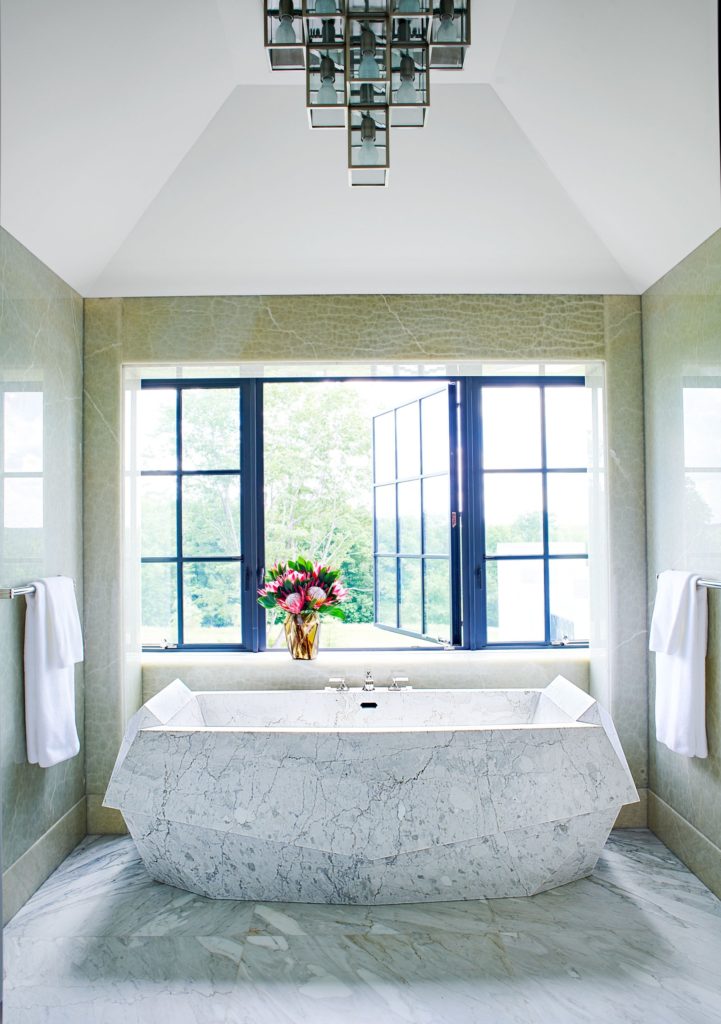In our quest to create the ideal indoor environment, one factor that frequently gets overlooked is the indoor air quality. It’s the invisible yet crucial aspect of our homes and workplaces that can dramatically affect our health, comfort, and productivity. Poor indoor air quality can be a silent culprit behind various health issues, ranging from minor irritations like odors to more serious conditions like asthma and respiratory problems.
The air we breathe indoors is often filled with pollutants from various sources, including building materials, cleaning products, and even outdoor air pollution that finds its way inside. These pollutants can accumulate over time, leading to an environment that’s less than ideal for our health and well-being. That’s where proper ventilation comes into play. Ventilation systems improve indoor air quality by replacing stale, polluted indoor air with fresh outdoor air, helping to purify the air and remove pollutants.
But when it comes to improving ventilation, not all solutions are created equal. This is where steel windows shine. They aren’t just about aesthetics; they’re about revolutionizing the way we think about airflow and air quality inside our buildings. Steel windows offer a unique combination of durability, design flexibility, and functionality that can significantly improve indoor air quality.
Think of your home as a living, breathing entity. Just like the lungs in your body, your home needs to breathe easy to maintain a healthy indoor environment. Steel windows can act like a set of powerful lungs for your home, efficiently exchanging stale air with fresh air. This process not only helps to purify the air but also manages humidity levels, which is crucial in preventing mold growth and maintaining a comfortable indoor environment.
In this article, we’ll delve deep into how investing in innovative steel window designs can be a game-changer when it comes to enhancing the air quality inside your home or office. We will explore various types of ventilation strategies, innovative designs, installation tips, and how steel windows can synergize with other systems to create a healthier indoor environment. So, let’s embark on this journey to improve your indoor air quality and ensure that the air you breathe is clean and healthy!
The Basics of Ventilation
Understanding Ventilation and Its Importance
Ventilation is akin to a breath of fresh air for buildings. It’s the process of exchanging indoor air with outdoor air, essential for reducing the levels of indoor pollutants, moisture, and odors. In the simplest terms, ventilation is the building’s way of breathing, ensuring that the air inside is continually refreshed and revitalized.
Why is proper ventilation so crucial? Well, think of a time when you were in a crowded, poorly ventilated room. The air felt heavy, maybe even stale. That’s a classic example of poor air quality due to inadequate ventilation. Without proper ventilation, pollutants accumulate, the air becomes stagnant, and we may experience discomfort or even health issues.
The Impact of Poor Ventilation
Poor ventilation can lead to several problems:
- Health effects: From headaches to serious respiratory issues, the impact on our health can be significant.
- Odor and mold growth: Lack of fresh air leads to unpleasant odors and promotes mold and mildew.
- Deterioration of indoor environment: Over time, pollutants can damage interiors and furnishings.
Role of Windows in Ventilation
Windows are more than just visual portals; they are vital for creating a healthy indoor environment. They allow for the exchange of air, providing a pathway for stale indoor air to leave and fresh outdoor air to enter. This natural ventilation method is not only effective but also energy-efficient.
Advantages of Steel Windows for Ventilation
Durability and Longevity
Steel windows are incredibly durable. Their robust nature means they withstand harsh weather conditions without warping or deteriorating, ensuring that your ventilation system remains effective year-round.
Customizability for Maximum Airflow
The beauty of steel windows lies in their customizability. They can be designed in various shapes and sizes, tailored to maximize airflow based on the building’s specific needs.
Energy Efficiency and Air Quality
Steel windows offer excellent energy efficiency. They can be fitted with high-performance glazing that minimizes heat loss, thereby aiding in maintaining indoor temperature and reducing energy costs. This efficiency indirectly supports ventilation by allowing for controlled air exchange without significant temperature fluctuations.
Innovative Designs in Steel Windows for Enhanced Airflow

Styles Optimized for Ventilation
Different styles of steel windows cater to different ventilation needs:
- Casement Windows: Open outward, providing full ventilation as they can catch side breezes.
- Awning Windows: Hinged at the top, they allow for ventilation even during light rain.
- Hopper Windows: Ideal for basements or tight spaces, they open inward and downward, creating efficient airflow.
Mechanics of Air Circulation
Each window design promotes better air circulation in its unique way. For instance, casement windows can act like a sail on a boat, catching breezes and directing them into the building.
Successful Installations
Including real-life examples of buildings where steel window installations have improved ventilation can be a powerful testament to their effectiveness. Showcasing before-and-after scenarios offers tangible proof of the benefits of steel windows in enhancing indoor air quality.
Installation and Maintenance Considerations
Guide to Effective Installation
Proper installation is key to maximizing the ventilation benefits of steel windows. It’s important to ensure that they are correctly sealed and aligned to prevent air leaks. This might be akin to ensuring a ship is watertight; even a small leak can undermine the entire structure’s integrity.
Maintenance Tips
Regular maintenance of steel windows is crucial for their longevity and effectiveness in ventilation. This includes routine cleaning, checking for any signs of wear or damage, and ensuring that moving parts are well-lubricated. Think of it like caring for a well-oiled machine; regular upkeep ensures smooth operation.
Common Mistakes to Avoid
Avoiding common installation and maintenance mistakes is essential. This includes improper sealing, neglecting regular inspections, and failing to address any minor issues promptly, which can escalate into bigger problems.
Integrating Steel Windows with Other Ventilation Systems
Complementing Other Strategies
Steel windows can beautifully complement other ventilation strategies, such as HVAC systems or natural ventilation techniques. It’s like adding an extra layer of defense to a fortress – the more layers, the stronger the defense against poor air quality.
Synergy with Green Building Designs
Incorporating steel windows into green building designs not only enhances ventilation but also contributes to the overall sustainability of the structure. This synergy can lead to a healthier, more eco-friendly building.
Cost-Benefit Analysis
Understanding the Investment
While the initial cost of installing steel windows might be higher than other options, it’s crucial to consider the long-term benefits. This is similar to investing in a high-quality appliance that offers better performance and longevity, ultimately saving money in the long run.
Long-Term Benefits
The long-term benefits of steel windows include energy savings, reduced health risks, and potential increases in property value. These factors often offset the initial investment over time.
FAQ
Q: What is the significance of indoor air quality?
A: Improving indoor air quality is crucial as it can lead to various health effects and reduce the risk of respiratory issues and allergies.
Q: How can innovative steel window designs improve indoor air quality?
A: Innovative steel window designs can improve ventilation and allow for better airflow, helping to reduce the risk of indoor air pollution and providing a healthy and comfortable environment.
Q: What are volatile organic compounds and why are they important in air quality?
A: Volatile organic compounds are chemicals that can off-gas from various products and materials, impacting indoor air quality. Understanding and controlling them is important for improving IAQ.
Q: Are there specific ventilation systems that can improve indoor air quality?
A: Yes, there are ventilation systems designed to improve indoor air quality by effectively removing pollutants and allergens from the air, promoting clean air circulation.
Q: How can steel window designs help in reducing indoor air pollution?
A: Steel window designs provide excellent durability and allow for effective natural ventilation, reducing the risk of indoor air pollution and enhancing the overall air quality within a space.
Q: What are the health benefits of breathing easy with improved indoor air quality?
A: Breathing easy in a space with improved air quality can lead to various health benefits, such as reduced respiratory issues, improved comfort, and a healthier environment overall.
Q: Can volatile organic compounds be effectively controlled to improve air quality?
A: Yes, through proper ventilation and the use of air purification systems, volatile organic compounds can be controlled, leading to better air quality and reduced exposure to harmful chemicals.
Q: Why is it important to consider the use of steel window designs for better air quality?
A: Steel window designs not only provide durability and aesthetic appeal but also contribute to better air quality by enabling improved ventilation and the removal of odors from the air.
Q: What role do windows play in enhancing indoor air quality?
A: Windows serve as a means for natural ventilation, allowing fresh air to circulate and improving the air quality within a space, which is essential for creating a healthy and comfortable environment.
Q: How can improving indoor air quality benefit overall well-being?
A: Improving indoor air quality can benefit overall well-being by reducing the presence of pollutants, promoting better respiratory health, and creating a more pleasant and comfortable living or working environment.
Conclusion
In conclusion, steel windows offer a robust and aesthetically pleasing solution to improve indoor air quality and ventilation. By understanding their benefits, installation, and maintenance requirements, and considering their long-term advantages, homeowners and businesses can make informed decisions that contribute to healthier indoor environments.



